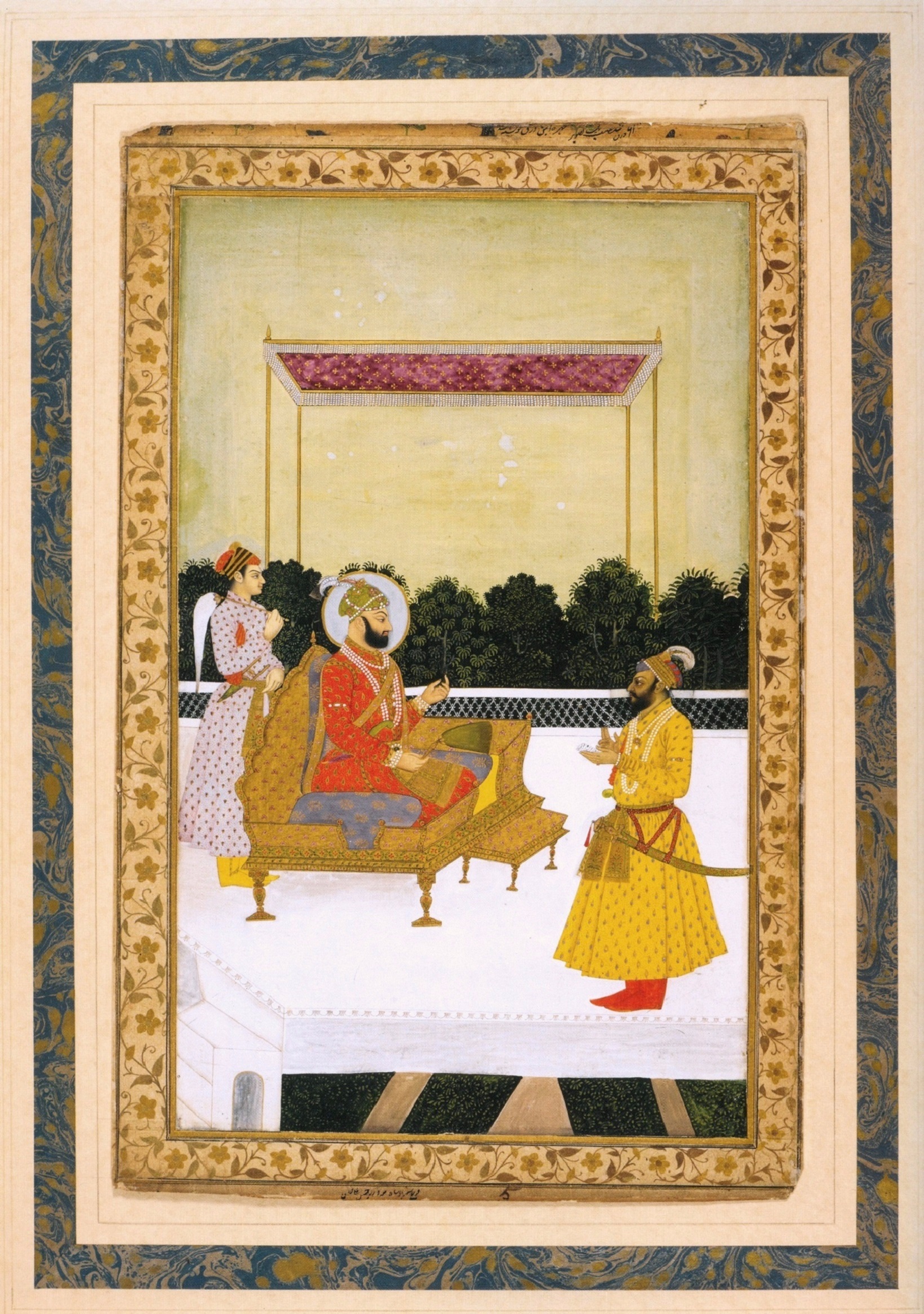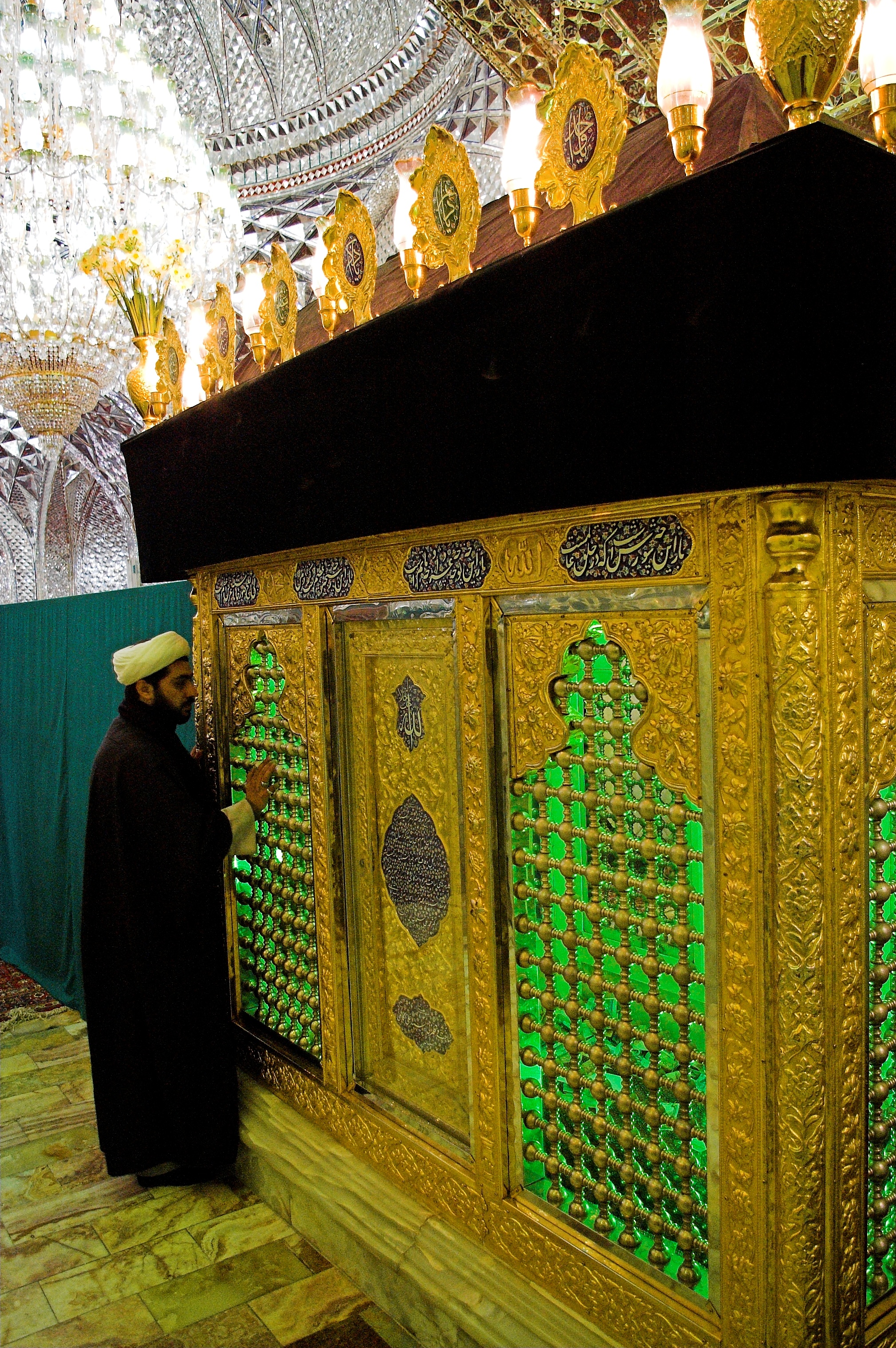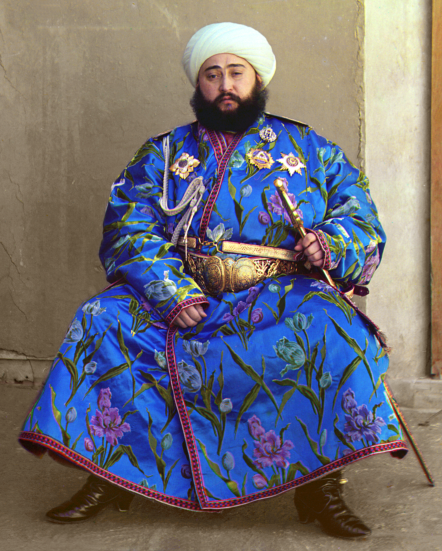|
Azerbaijani Dress
Azerbaijani traditional clothing ( az, Azərbaycan milli geyimi) is the traditional attire of the Azerbaijani people. It is closely connected to its history, religious culture and national identity. Costumes and dresses are of great importance in Azerbaijani culture. Azerbaijani style is visible in ornaments of costumes with artistic embroideries in weaving and knitting. In the 17th century, the territory of modern Azerbaijan was of great importance to the silk industry. Silks were produced in the cities Shamakhi, Basqal, Ganja, Shaki, Shusha, and others. The style of clothes and their colours reflects their wearers' marital status, wealth, and other information. Men's wear Male folkwear is very similar from region to region but always reflects social class. Outerwear National outerwear for men consists of a (shirt) or , Arkhalig, , ''Chukha'' and ''Kurk''. * ''Arkhalig'' – a long, tight, waist-jacket made of fabrics including silk, satin, cloth, cashmere and velvet, depen ... [...More Info...] [...Related Items...] OR: [Wikipedia] [Google] [Baidu] |
Azerbaijanis
Azerbaijanis (; az, Azərbaycanlılar, ), Azeris ( az, Azərilər, ), or Azerbaijani Turks ( az, Azərbaycan Türkləri, ) are a Turkic people living mainly in northwestern Iran and the Republic of Azerbaijan. They are the second-most numerous ethnic group among the Turkic-speaking peoples after Turkish people and are predominantly Shia Muslims. They comprise the largest ethnic group in the Republic of Azerbaijan and the second-largest ethnic group in neighboring Iran and Georgia. They speak the Azerbaijani language, belonging to the Oghuz branch of the Turkic languages and carry a mixed heritage of Caucasian, "The Albanians in the eastern plain leading down to the Caspian Sea mixed with the Turkish population and eventually became Muslims." "...while the eastern Transcaucasian countryside was home to a very large Turkic-speaking Muslim population. The Russians referred to them as Tartars, but we now consider them Azerbaijanis, a distinct people with their own language and c ... [...More Info...] [...Related Items...] OR: [Wikipedia] [Google] [Baidu] |
Bashlyk
A bashlyk, also spelled bashlik ( krc, Başlıq, Adyghe: ''Shkharkhon,'' Abkhaz: ''qtarpá'', Chechen: ''Ċukkuiy,'' Ossetic: ''Kaskæ'' crh, Başlıq, Tatar: Başlıq, Turkish: Başlık; "baş" - head, "-lıq" (''Tatar'') / "-lık" (''Turkish'') - derivative suffix)'','' is a traditional Turkic, Caucasian, Iranian, and Cossack cone-shaped headdress hood, usually of leather, felt or wool, an ancient round topped felt bonnet with lappets for wrapping around the neck. Local versions determine the trim, which may consist of decorative cords, embroidery, jewelry, metallized strings, fur balls or tassels. Among dozens of versions are winter bashlyks worn atop regular headdress, cotton bashlyks, homeknitted bashlyks, silk bashlyks, scarf bashlyks, down bashlyks, dress bashlyks, jumpsuit-type bashlyks, etc. Bashlyks are used as traditional folk garment, and as uniform headdress. A variation of bashlyks is a Kalpak (Qalpaq), a cone-shaped headdress without lappets, mostly made of ... [...More Info...] [...Related Items...] OR: [Wikipedia] [Google] [Baidu] |
Kazakhsky Uyezd
The Kazakh uezd was a county (''uezd'') of the Elizavetpol Governorate of the Russian Empire and later of the Azerbaijan Democratic Republic with its center in Kazakh (present-day Qazax) from 1868 until its formal abolition in 1929 by the Soviet authorities of the Azerbaijan SSR. The area of the Kazakh uezd forms a large part of the modern-day Tavush Province and a small northeastern part of the Gegharkunik Province of Armenia, also forming most of the area of the Agstafa, Tovuz and Qazax districts of Azerbaijan. Geography The Kazakh uezd was located in the northwestern part of Elizavetpol Governorate, bordering the Tiflis Governorate in the north, the Erivan Governorates in the southwest, and the Elizavetpol uezd in the east. The area of the uezd was 6024.2 square versts. The southwestern part of the uezd was mountainous, whereas the northeastern part mainly consisted of lowlands. Two-thirds of uezd was covered by Sevan or Shah-dagh mountain range of Lesser Caucasus which forme ... [...More Info...] [...Related Items...] OR: [Wikipedia] [Google] [Baidu] |
Arkhalig
An arkhalig ka, ახალუხი, hy, արխալուղ, fa, ارخالق) is part of both male and female traditional dress of the peoples of the Caucasus and Iran. The arkhalig originated from the ''beshmet'', a Turkic outer clothing later worn by Cossacks. An arkhalig is a long tight-waist jacket made of various kinds of fabric, such as silk, satin, cloth, cashmere and velvet, traditionally depending on the social status of its owner. Male arkhaligs can be both single-breasted (done up with hooks) and double-breasted (done up with buttons). In cold weather, a chokha is put on above an arkhalig. Female arkhaligs are often ornamented and have tight long sleeves widening on the wrists. A female arkhalig can also include a fur list along the edges, patterned laces and braids, or be decorated with gold embroidery. [...More Info...] [...Related Items...] OR: [Wikipedia] [Google] [Baidu] |
Hordeum
''Hordeum'' is a genus of annual and perennial plants in the grass family. They are native throughout the temperate regions of Africa, Eurasia, and the Americas. One species, ''Hordeum vulgare'' (barley), has become of major commercial importance as a cereal grain, used as fodder crop and for malting in the production of beer and whiskey. Some species are nuisance weeds introduced worldwide by human activities, others have become endangered due to habitat loss. ''Hordeum'' species are used as food plants by the larvae of some Lepidoptera species, including the flame, rustic shoulder-knot and setaceous Hebrew character. The name '' Hordeum'' comes from the Latin word for "to bristle" (''horreō'', ''horrēre''), and is akin to the word " horror". Species Species include: * '' Hordeum aegiceras'' – Mongolia, China including Tibet * ''Hordeum arizonicum'' US (CA AZ NV NM), Mexico (Baja California, Sonora, Durango) * '' Hordeum bogdanii'' – from Turkey and European Ru ... [...More Info...] [...Related Items...] OR: [Wikipedia] [Google] [Baidu] |
Chador
A chādor (Persian, ur, چادر, lit=tent), also variously spelled in English as chadah, chad(d)ar, chader, chud(d)ah, chadur, and naturalized as , is an outer garment or open cloak worn by many women in the Persian-influenced countries of Iran, Afghanistan, Pakistan and to a lesser extent Tajikistan, as well as in Shia communities in Iraq, Bahrain, and Qatif in Saudi Arabia in areas in public spaces or outdoors. A chador is a full-body-length semicircle of fabric that is open down the front. The garment is pulled over the head, and is held closed at the front by the wearer; the chador has no hand openings, buttons, or clasps. It may also be held closed by being tucked under the wearer's arms. The word in Classical Persian could be used in reference to almost any cloth, headscarf, or even tents. This definition is mostly retained in eastern dialects of Persian which commonly use chādar in reference to almost any cloth or scarf, including loosely worn scarves that would be inap ... [...More Info...] [...Related Items...] OR: [Wikipedia] [Google] [Baidu] |
Azerbaijani Girl In National Costume
Azerbaijani may refer to: * Something of, or related to Azerbaijan * Azerbaijanis * Azerbaijani language See also * Azerbaijan (other) * Azeri (other) * Azerbaijani cuisine * Culture of Azerbaijan The culture of Azerbaijan ( az, Azərbaycan mədəniyyəti) combines a diverse and heterogeneous set of elements which developed under the influence of Turkic, Iranic and Caucasian cultures. The country has a unique cuisine, literature, folk art, ... * {{Disambig Language and nationality disambiguation pages ... [...More Info...] [...Related Items...] OR: [Wikipedia] [Google] [Baidu] |
Jorabs
Jorabs are multicolored socks with intricate patterns, knitted from the toe-up. They are usually worn in such a way as to display rich decoration. Etymology The word "Jorabs" originates from Arabic جورب () which has a general meaning of "socks". Other known variants of the term are “çorap" ( Turkish), "чорап" (Bulgarian, Macedonian) "čarape" ( Serbian), “corab" ( Azerbaijani), "čarapa" ( Bosnian), “Ҷӯроб" ( Tajik), and "şətəl" ( Tat). The same concept is also known by such local terms as “kyulyutar” in Lezgin, “” in Tsakhur, and “unq’al” in Avar languages of Dagestan. Materials Jorabs are made of wool, silk, nylon or sometimes cotton. Other materials include acrylic and blends of wool and cotton. Geography Jorabs are found in Central Asia (Turkmenistan, Tajikistan, and Afghanistan), Caucasus (Dagestan, Georgia, Azerbaijan, and Armenia); also in Iran, and mountain areas of Pakistan Pakistan ( ur, ), officially t ... [...More Info...] [...Related Items...] OR: [Wikipedia] [Google] [Baidu] |
Sheikh
Sheikh (pronounced or ; ar, شيخ ' , mostly pronounced , plural ' )—also transliterated sheekh, sheyikh, shaykh, shayk, shekh, shaik and Shaikh, shak—is an honorific title in the Arabic language. It commonly designates a chief of a tribe or a royal family member in Arabian countries, in some countries it is also given to those of great knowledge in religious affairs as a surname by a prestige religious leader from a chain of Sufi scholars. It is also commonly used to refer to a Muslim religious scholar. It is also used as an honorary title by people claiming to be descended from Hasan ibn Ali and Husayn ibn Ali both patrilineal and matrilineal who are grandsons of the Islamic prophet Muhammad. The term is literally translated to " Elder" (is also translated to "Lord/Master" in a monarchical context). The word 'sheikh' is mentioned in the 23rd verse of Surah Al-Qasas in the Quran. Etymology and meaning The word in Arabic stems from a triliteral root connected with a ... [...More Info...] [...Related Items...] OR: [Wikipedia] [Google] [Baidu] |
Sayyid
''Sayyid'' (, ; ar, سيد ; ; meaning 'sir', 'Lord', 'Master'; Arabic plural: ; feminine: ; ) is a surname of people descending from the Prophets in Islam, Islamic prophet Muhammad through his grandsons, Hasan ibn Ali and Husayn ibn Ali, sons of Muhammad's daughter Fatimah, Fatima and his cousin and son-in-law Ali (Ali ibn Abi Talib). While in the Islamic golden age, early islamic period the title Al-Sayyid was applied on all the members of the of Banu Hashim, banu hashim, the tribe of Muhammad. But later on the title was made specific to those of Hasanids, Hasani and Hussaini descent, Primarily by the List of Fatimid caliphs, Fatimid Caliphs. Female ''sayyids'' are given the titles ''sayyida'', ''syeda'', ''alawiyah'' . In some regions of the Islamic world, such as in Iraq, the descendants of Muhammad are given the title ''Emir, amīr'' or ''mīr'', meaning "aristocrats", "commander", or "ruler". In Shia Islam the son of a non Sayyid father and a Sayyida mother claim ... [...More Info...] [...Related Items...] OR: [Wikipedia] [Google] [Baidu] |
Mullah
Mullah (; ) is an honorific title for Shia and Sunni Muslim clergy or a Muslim mosque leader. The term is also sometimes used for a person who has higher education in Islamic theology and sharia law. The title has also been used in some Mizrahi and Sephardic Jewish communities to refer to the community's leadership, especially religious leadership. Etymology The word ''mullah'' is derived from the Arabic word ''mawlā'' ( ar, مَوْلَى), meaning "vicar", "master" and "guardian". Usage Historical usage The term has also been used among Persian Jews, Bukharan Jews, Afghan Jews, and other Central Asian Jews to refer to the community's religious and/or secular leadership. In Kaifeng, China, the historic Chinese Jews who managed the synagogue were called "mullahs". Modern usage It is the term commonly used for village or neighborhood mosque leaders, who may not have high levels of religious education, in large parts of the Muslim world, particularly Iran, Turkey, ... [...More Info...] [...Related Items...] OR: [Wikipedia] [Google] [Baidu] |
Turban
A turban (from Persian دولبند, ''dulband''; via Middle French ''turbant'') is a type of headwear based on cloth winding. Featuring many variations, it is worn as customary headwear by people of various cultures. Communities with prominent turban-wearing traditions can be found in the Indian subcontinent, Southeast Asia, the Arabian Peninsula, the Middle East, the Balkans, the Caucasus, Central Asia, North Africa, West Africa, East Africa, and amongst some Turkic peoples in Russia as well as Ashkenazi Jews. A keski is a type of turban, a long piece of cloth roughly half the length of a traditional "single turban", but not cut and sewn to make a double-width "Double Turban" (or Double Patti). Wearing turbans is common among Sikh men, and infrequently women. They are also worn by Hindu monks. The headgear also serves as a religious observance, including among Shia Muslims, who regard turban-wearing as ''Sunnah mu’akkadah'' (confirmed tradition). The turban is also the tr ... [...More Info...] [...Related Items...] OR: [Wikipedia] [Google] [Baidu] |







